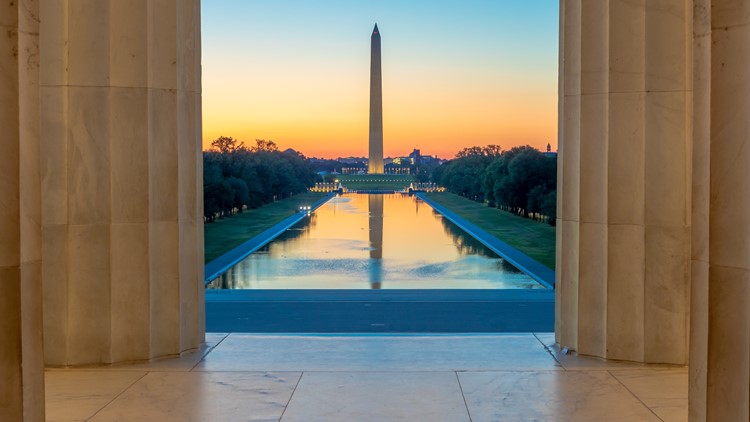WASHINGTON — Temperatures will approach the 100-degree mark later this week in the nation’s capital. Having one day of triple-digit heat is relatively rare in Washington, D.C., and rarer still on consecutive days. Even if high temperatures remain in the upper 90s, the relative humidity will combine with the above-average temperatures to make it feel much hotter.
The “heat index” is what people feel when air temperatures are combined with relative humidity.
On Thursday and Friday, the heat index will be between 100 degrees and 110 degrees which is as dangerous as it gets in the nation’s capital. When the heat index is this high, heat-related illnesses can occur, such as heat exhaustion and heat stroke. The last time triple-digit heat occurred in Washington, D.C. was in August 2016. That was also the last time Washingtonians experienced triple-digit heat on consecutive days (August 13 – 15).
D.C.’s hottest temperature during all of last year was 99 degrees on June 17, 2022. Meanwhile, the hottest temperature so far this year was 94 degrees on June 2 and July 13. Temperatures are poised to reach or exceed that on Thursday and continuing through Saturday. Having three consecutive days of high temperatures ranging from 95 degrees to 99 degrees happens infrequently in the nation’s capital. According to the National Oceanic and Atmospheric Administration (NOAA), the last time that occurred was on July 21 – 23, 2022.
D.C.’s hottest overall temperature on record is 106 degrees and has occurred only twice, most recently on July 20, 1930. Its second hottest all-time temperature is 105 degrees and has also occurred twice, most recently on July 7, 2012.
Data from NOAA illustrates how deadly extreme heat like this can be. Extreme heat and deaths from heat-related illness are the top weather killer in the United States with an annual average of 168 fatalities for the 30-year period from 1993-2022 according to NOAA. That’s higher than annualized deaths from flood emergencies and hurricanes. Fortunately, the advent of central air conditioning made the 2012 heat wave less deadly than in 1930, but extreme heat remains both dangerous and deadly.
Although weather records in the nation’s capital date back to 1871, the more significant date to remember is 1941. That’s when National Airport opened and where the National Weather Service has kept DC’s weather records ever since.
Prior to 1941, weather measurements were made in downtown Washington, D.C. Conditions are quite different now between the two locations because one has the moderating influence of the Potomac River and the other’s weather is influenced by the urban heat island effect.
Since 1941, urbanization has increased dramatically. Consequently, overnight low temperatures remain much warmer than they used to. The net impact of the warmer overnight temperatures has been higher daily average temperatures. That’s why the nation’s capital has had many of its warmest months on record over the last 10 to 20 years.
Record Highs (Source: NOAA)
July 27
Washington, DC – National Airport (DCA): 100° (1940)
Dulles Airport, Sterling, VA (IAD): 98° (1993)
BWI Airport: 101° (1940)
July 28
DCA: 100° (1997, 1993)
IAD: 99° (1993)
BWI: 103° (1941)
July 29
DCA: 104° (2011)
IAD: 103° (2011)
BWI: 101° (2011)
WATCH NEXT: Some spray parks open early in DC



